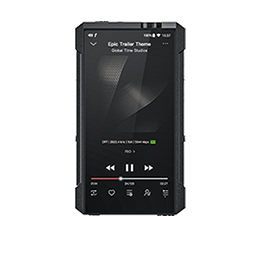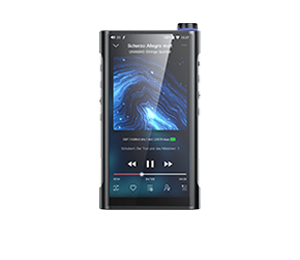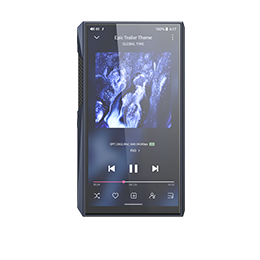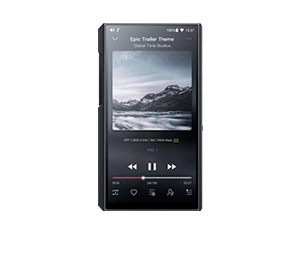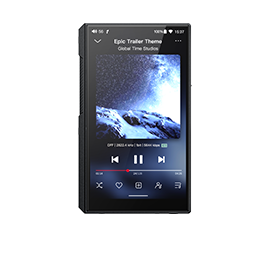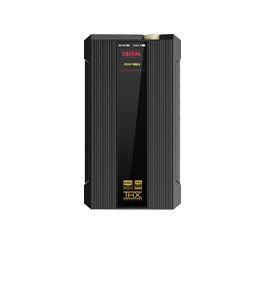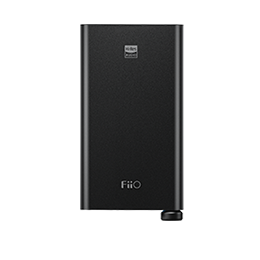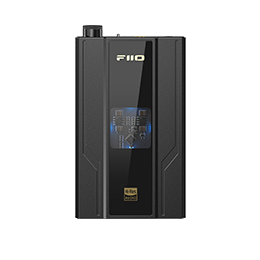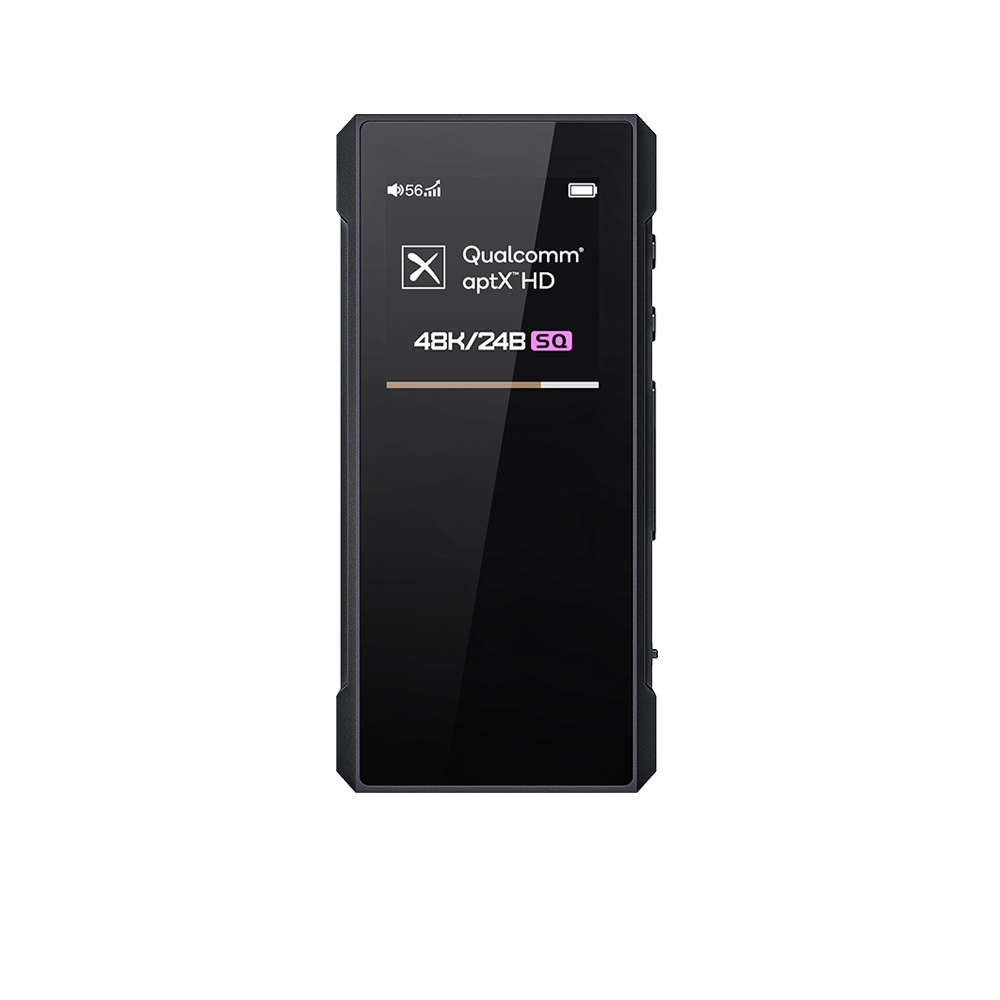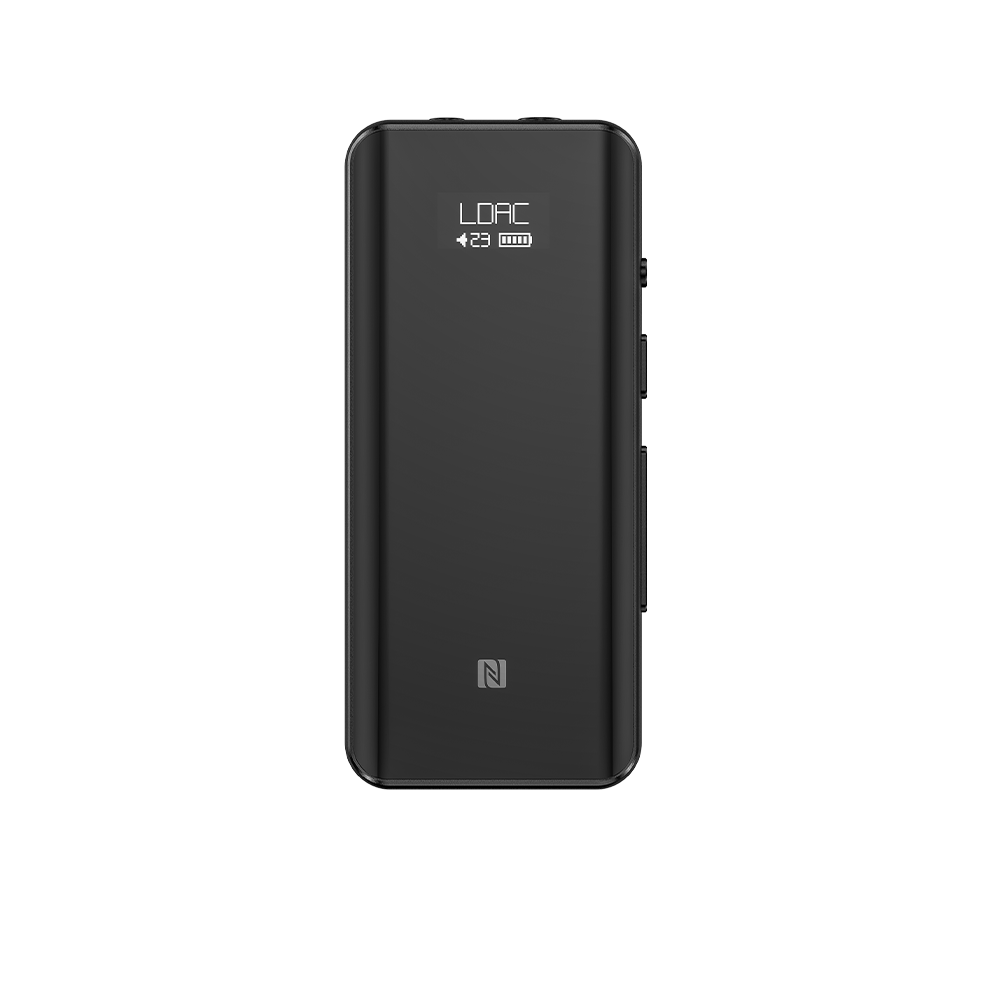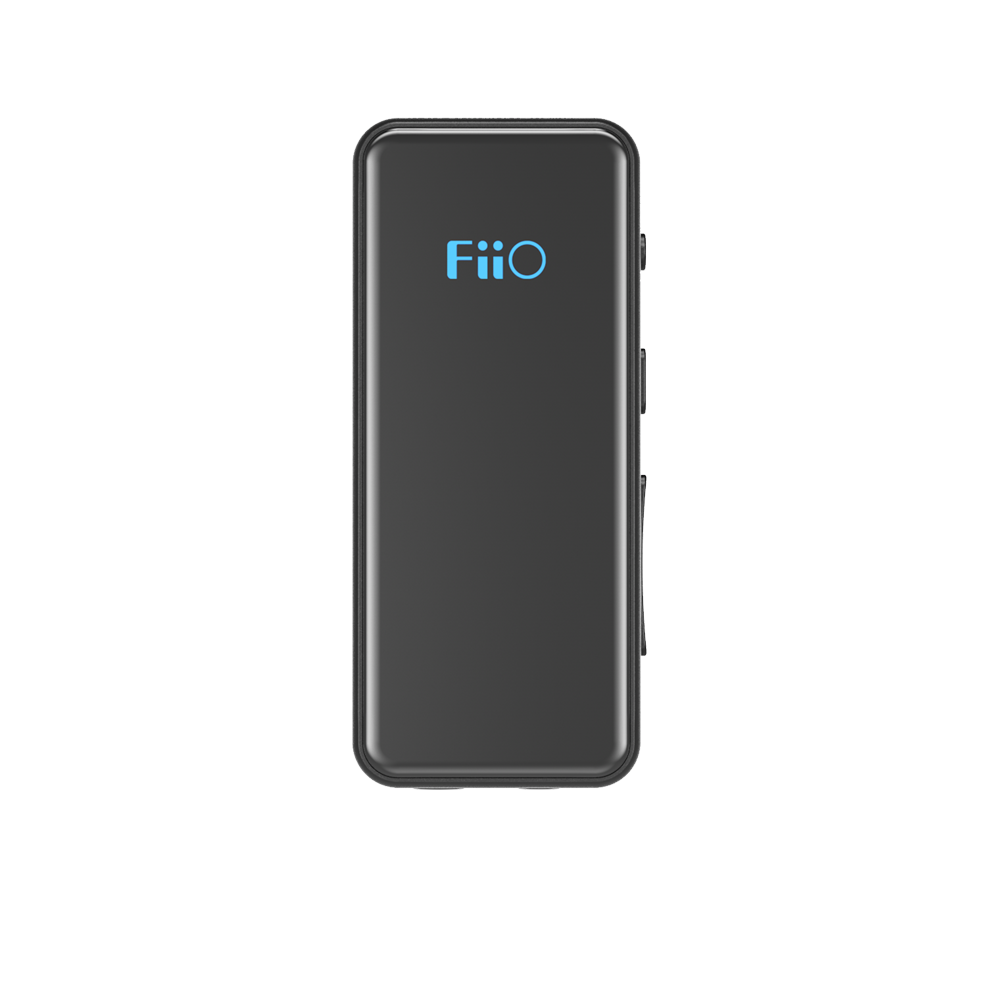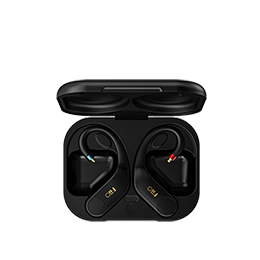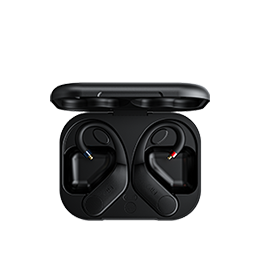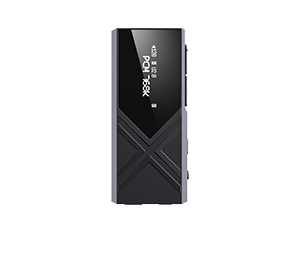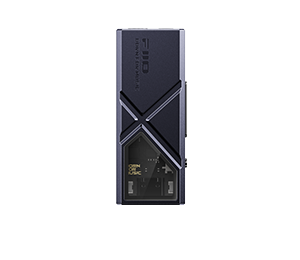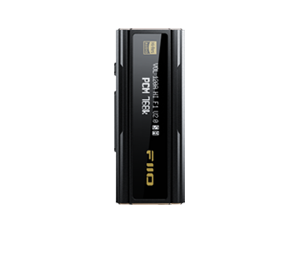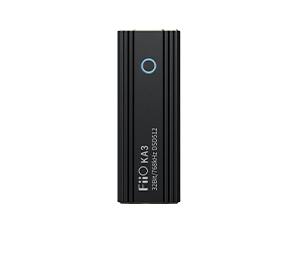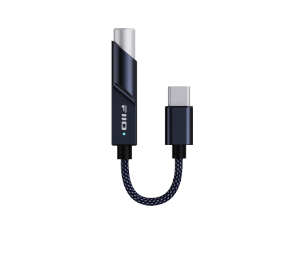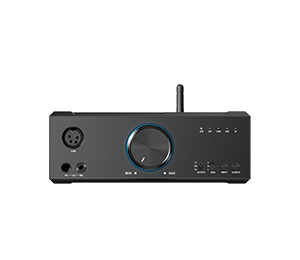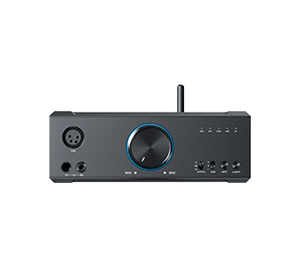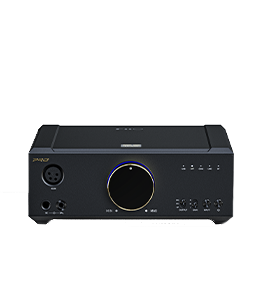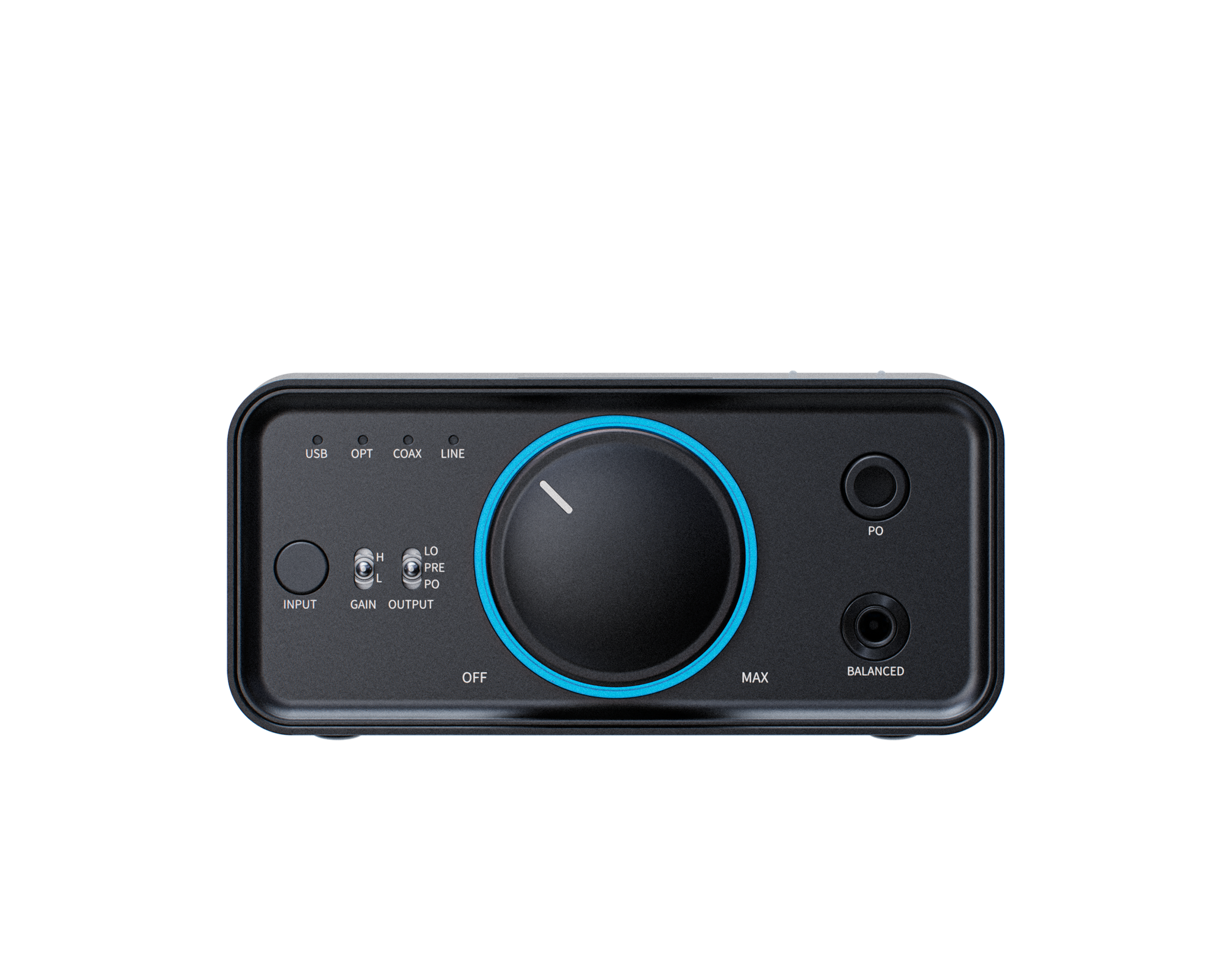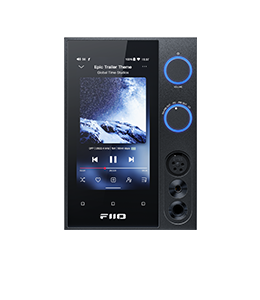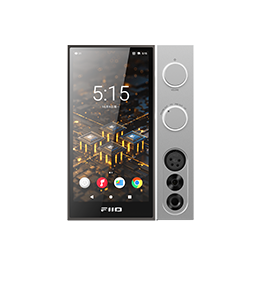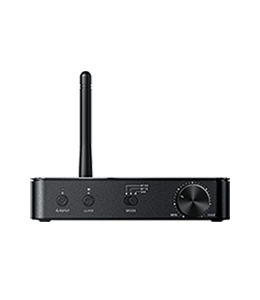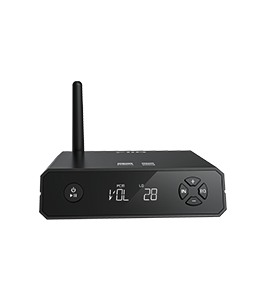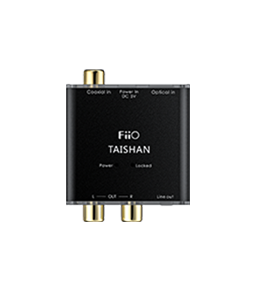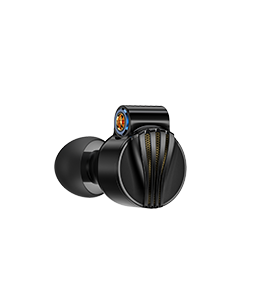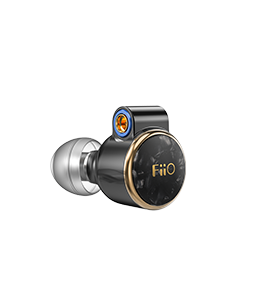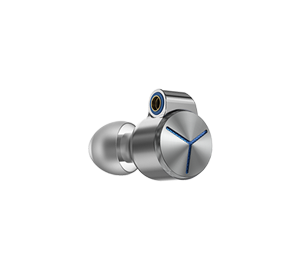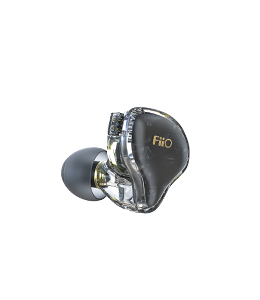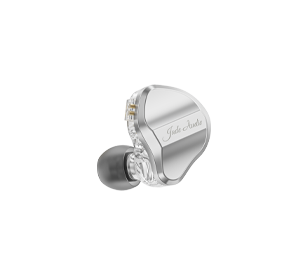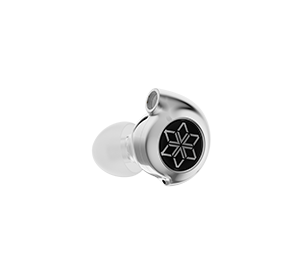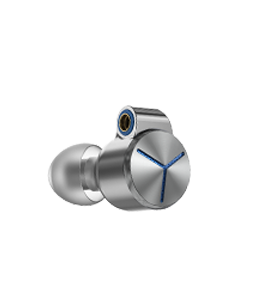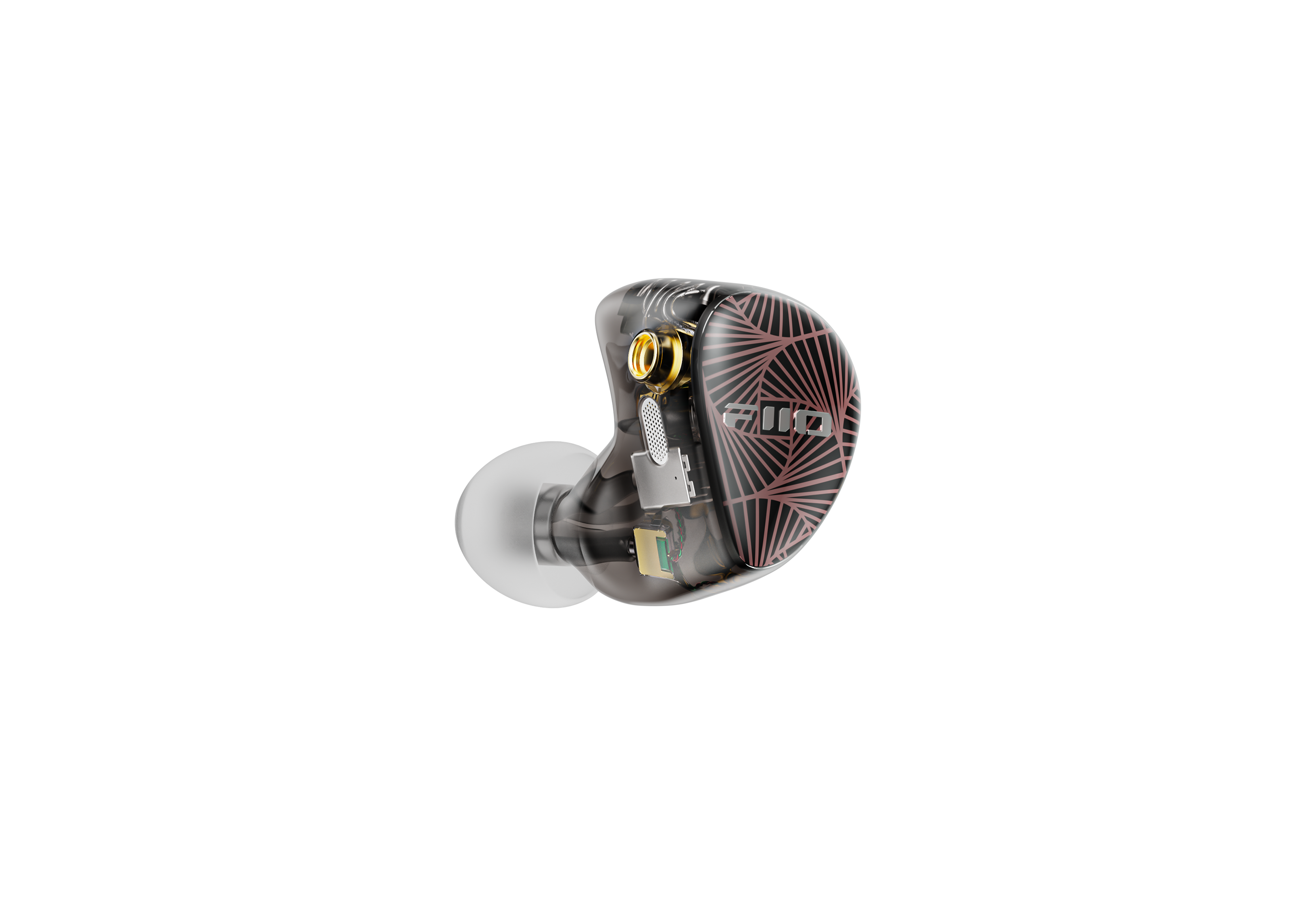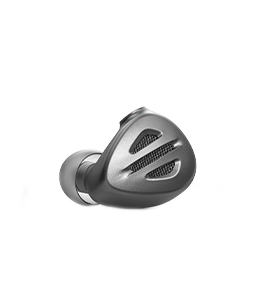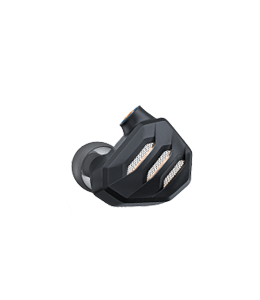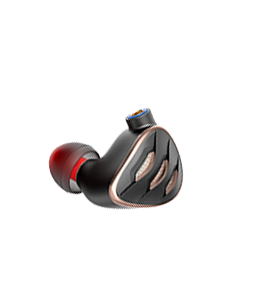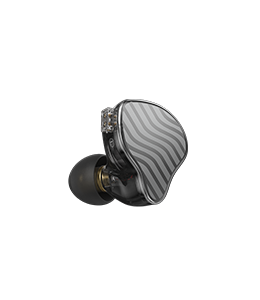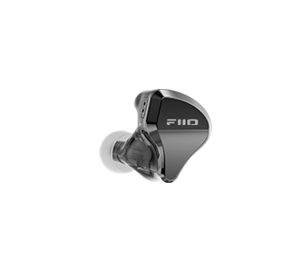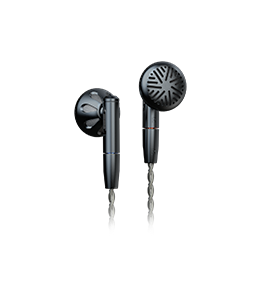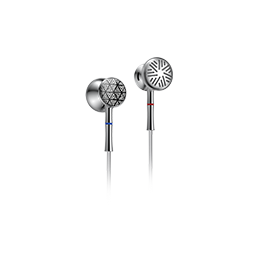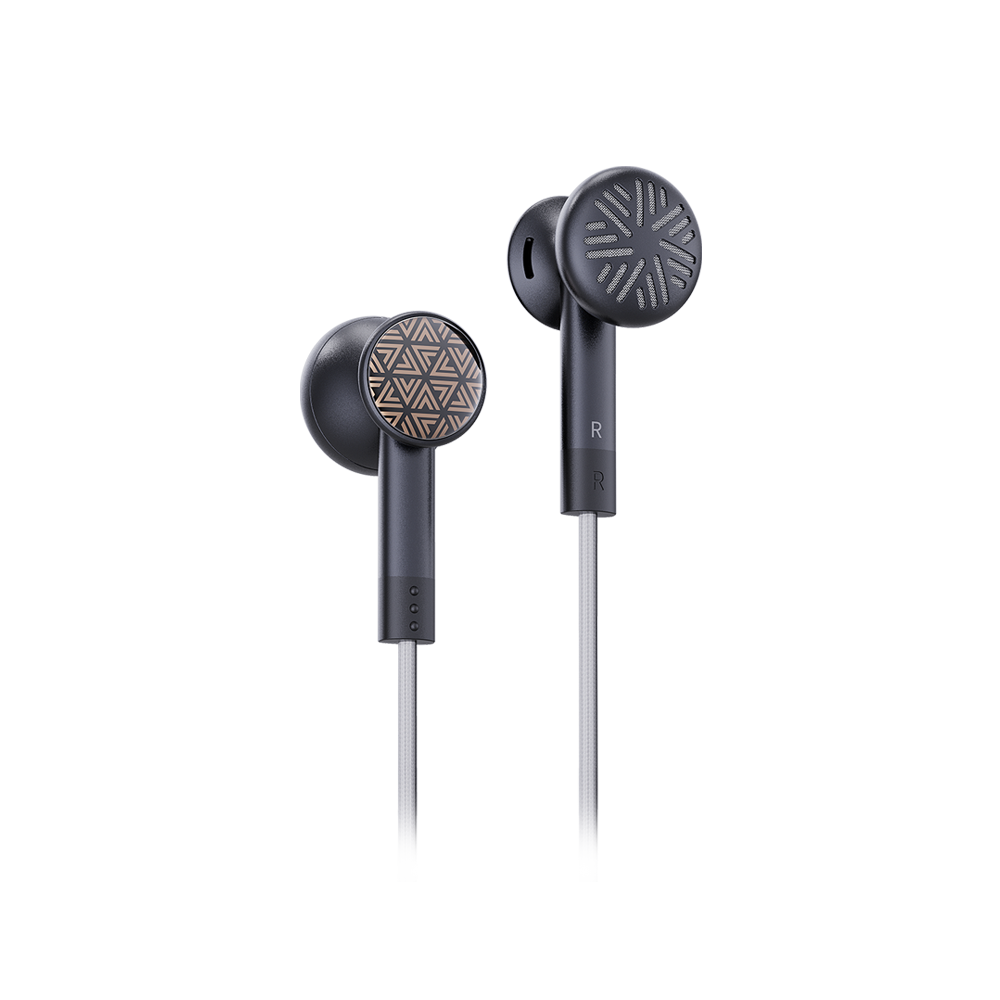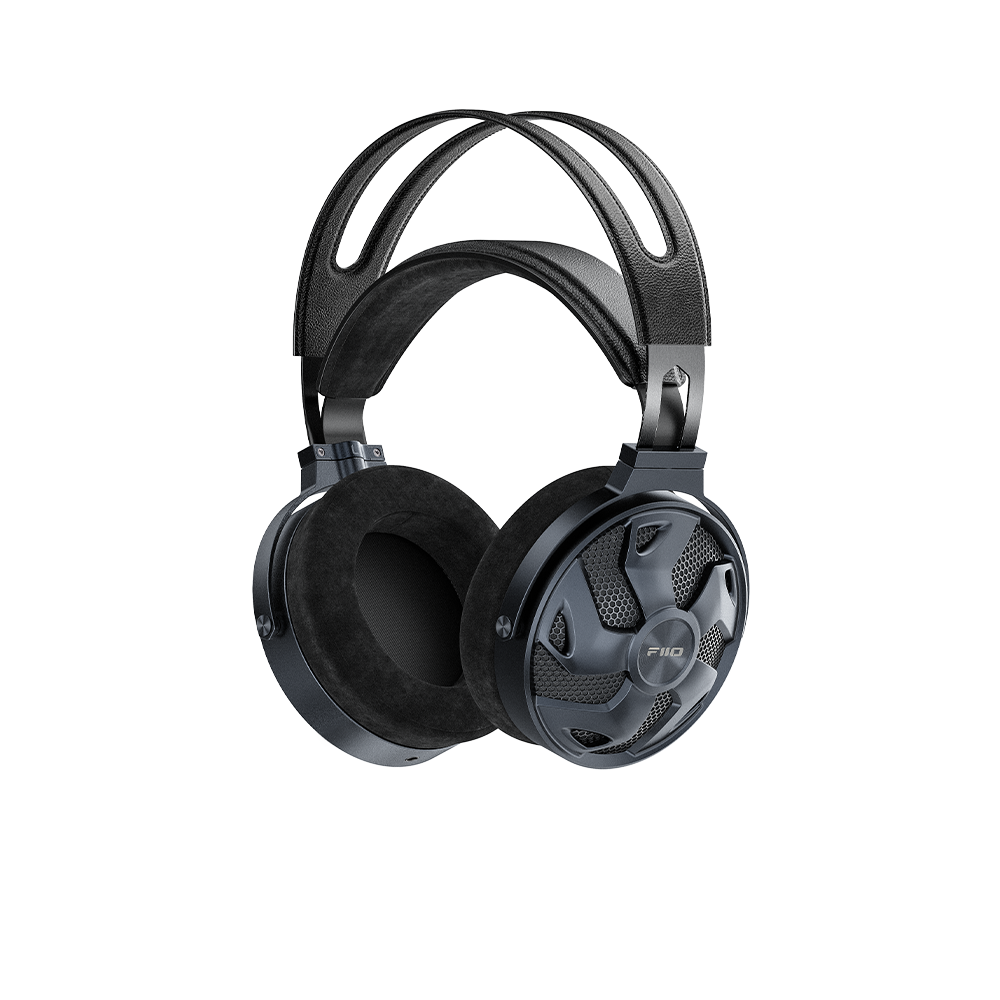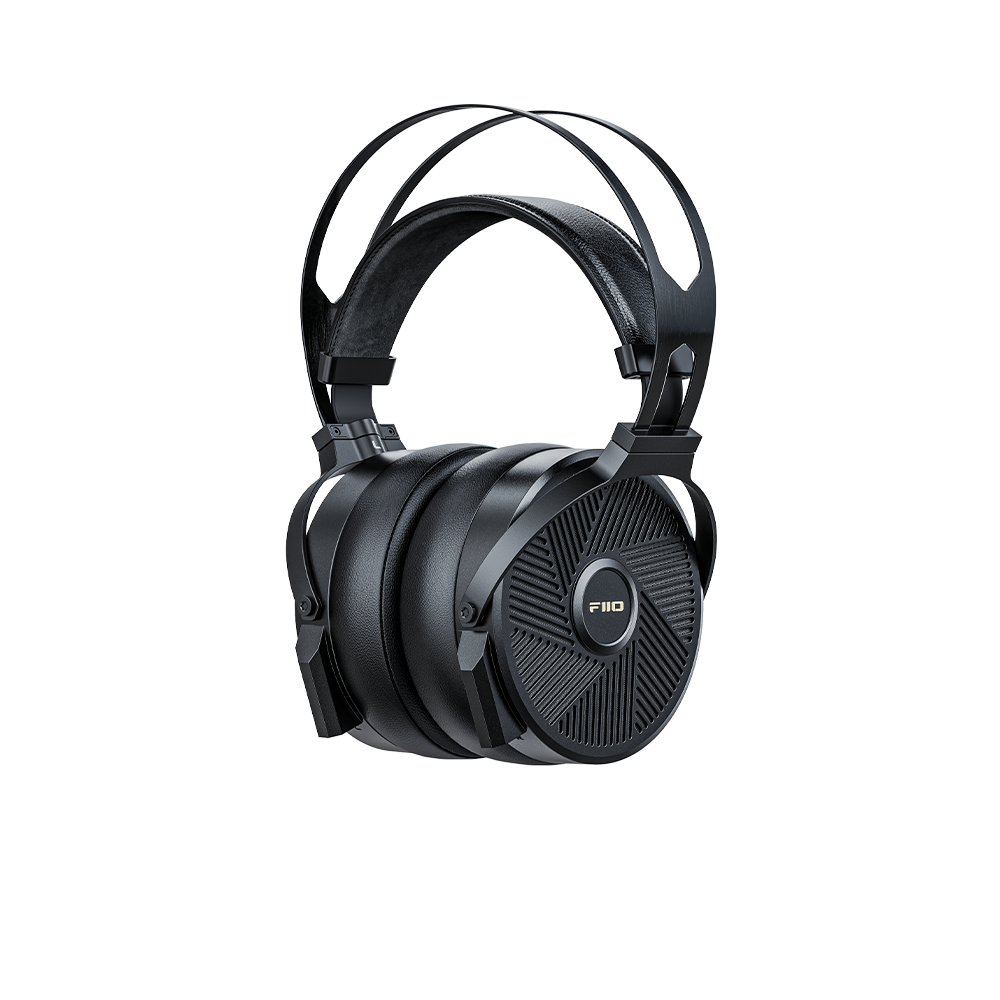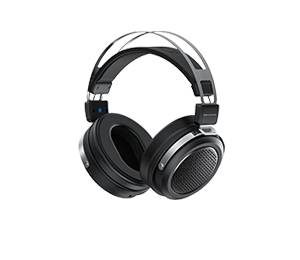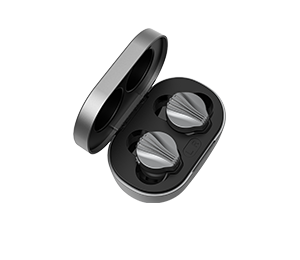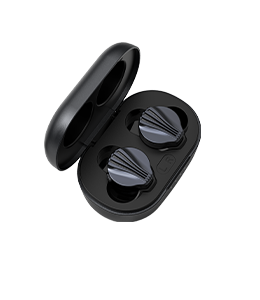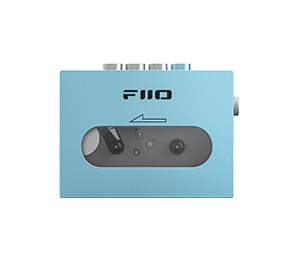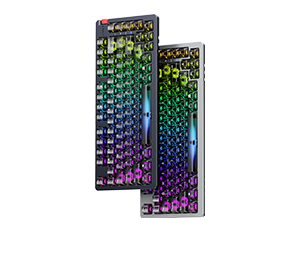FiiO Feiao X7 Mark II Portable Smart Audio Player Evaluation Report
Feiao X7 MarkII was released and launched in July 2017. This is an update and upgrade after Feiao launched the X7 player in November 2015. Although it has been nearly two years apart, the activity of X7 has not been low, thanks to Feiao's gradual improvement and upgrading of its operating system and related functions in 2016. At the same time, it has successively introduced AM2, AM5, AM3 and other ear modules. This also gives full play to the advantages of the intelligent operating system and the replaceable ear module.

FiiO Feiao X7 Mark II Portable Smart Audio Player
X7 MarkII has maintained the same positioning as when the first-generation products were launched. The standard AM3A ear module is priced at 4498 yuan [the price of X7 AM1 ear module in 2015 is 3998 yuan, but the single purchase of upgraded ear module is 698 yuan]. For a Walkman product, the update frequency in two years is actually quite fast. It is not easy to make breakthroughs and make great progress unless you encounter black technology. So, how did the X7 MarkII perform?
appearance and function

FiiO Feiao X7 Mark II Portable Smart Audio Player
the launch of Feiao X7, at a price of about 4000 yuan, broke through the price of the flagship model of Feiao's original product line. After two years, thanks to Feiao's own breakthrough in product design, appearance technology, and operating system and The gradual optimization of software has a great impact on the Walkman market. Android intelligent operating system and touch control, online network functions are likely to become standard in the walkman market in the future. In order to provide greater output power of the ear amplifier under similar volume, the balanced ear amplifier design will also become the standard configuration of the future walkman. Therefore, the positioning of Feiao X7 is quite successful today, two years later.
to make further improvements in a successful product, while the price of the product remains unchanged, from this point of view, the task of X7 MarkII is arduous.
X7 MarkII remains the same as that of the first generation X7, and the switch and lock screen keys are moved to the top, and the playback function keys and volume adjustment wheel of the blind operation are all moved to the left side of the body. Due to the addition of the volume adjustment wheel, the addition of the control area on the left side widens the body. It has a shape similar to the oblique line cut on the X5III, which looks more design than the first-generation X7. The layout of the buttons and the control area is also More reasonable, the visual effect is greatly improved.

FiiO Feiao X7 Mark II Portable Smart Audio Player
, like X5III, the red circle of the switch button, the rolling damping of the volume knob, and the surface modification of the turning tool pattern are all iconic design details newly added by Feiao. In addition to these details, the surface oxidation color of the X7MarkII seems to be slightly lighter than that of the X7 generation, and the fineness of sandblasting is also higher. Compared with the X7 generation, the prominence of the glass screen is greatly reduced [if the film is not pasted, the screen should be completely embedded in it]. Therefore, from the side, the X7MarkII body, screen and bright edge chamfer are integrated. Compared with the X7 generation, when you compare carefully, you will feel that the X7MarkII improvement is still quite large.

FiiO Feiao X7 Mark II Portable Smart Audio Player-Volume Adjustment Wheel FiiO Feiao X7 Mark II Portable Smart Audio Player-Power Switch

FiiO Feiao X7 Mark II Portable Smart Audio Player-Bottom AM3A Ear Module Interface FiiO Feiao X7 Mark II Portable Smart Audio Player-Card Slot![]()
![]()
has been adjusted, it is X7MarkII perfectly compatible with X7 ear module. Of course, this must be done, otherwise X7 ear module will have a short service life. As shown in the figure, it can be seen that Feiao skillfully added a decorative piece to the left side of the fixed ear module, which not only plays the role of fixing the ear module, but also just integrates with the shape of the upper half of the fuselage.

FiiO Feiao X7 Mark II Portable Smart Audio Player-Compared with X7 Generation
on the back of the X7MarkII, it is also an improvement compared with the first generation X7. As can be seen from the figure, the back of the X7 generation actually has a bump in the middle, while the lower part at the top is covered with non-metal material and is used as an antenna for wireless networks. The back of the X7MarkII is flattened, which means it is thinner than the X7 generation. In the part where the earring module is connected to the fuselage, Feiao still retains the blue breathing light design in the center. I wonder if there is any chance that this breathing light can play with small functions of many colors. The two card slots of the external memory card are also changed to a metal card-type design, on the right side of the body.

FiiO Feiao X7 Mark II Portable Smart Audio Player-Compared with X7 Generation
In terms of output interface, the top of X7 MarkII is a 3.5mm S/Pdif coaxial adapter and Lineout interface. The optical fiber output function is also added inside this interface. After the interface is inserted with a standard round-port optical fiber plug, the switch will be activated to turn on the optical fiber output light source [for example, Macbook Pro also has similar functions]. The earphone module AM3A provides a 3.5mm unbalanced standard stereo and 2.5mm balanced earphone output.
from the appearance, the improvement in details of Feiao X7 MarkII is still relatively obvious, and it is easier to detect the delicate side of many small links of X7 MarkII by careful comparison.
Core hardware architecture and main functions
master chip:Feiao X7 MarkII still uses Ruixinwei's RK3188 processor [2GB memory] in the main control system. This processor is used on Feiao X7 generation and X5III. Although the CPU has not been upgraded, the new operating system used by Feiao on X5III is also suitable for X7MarkII.

FiiO Feiao X7 Mark II Portable Smart Audio Player-Disassembly
in terms of fluency, power management and system stability, Feiao has performed very well under the new Android system, especially in terms of power management, which is probably not comparable to similar Walkman products [such as iBasso DX200]. The power management of walkmen with non-intelligent operating systems is probably even weaker.
Although we disassembled the X7 MarkII, many core chips are covered by some shields and cannot be seen. Since Feiao and Haibei Music stopped cooperating in 2016, it is believed that the clock management chip on X7 MarkII is no longer the FPGA chip used by Haibei when X7 was released. The specific plan is unknown.
DAC chip and analog output: The DAC chip used by Feiao on the X7 generation player is ESS ES9018S, while Feiao on the X7 MarkII is upgraded to ES9028Pro. For a 4000 yuan level player, it is actually very sincere to make such an upgrade. Of course, whether it is playing well or not is another thing. ES9028Pro is ESS's latest generation of sub-flagship products. The new generation of ESS DAC chips, including ES9028Pro, ES9026Pro and ES9038Pro, have optimized the internal DSP, provided an open digital filter into a design interface, and provided more choices by default. Judging from the decoders of ES9028Pro DX200, ES9038Pro and ES9026Pro MatrixAudio tested in the past, the overall quality of ESS generation DAC chips can easily be better than before.

FiiO Feiao X7 Mark II Portable Intelligent Audio Player-Disassembly-ESS ES9028PRO DAC and Related Circuits
In terms of digital clock reference, Feiao X7 MarkII uses three independent active crystal oscillators, 45MHz, 49MHz and 100MHz. In this usage, the 100MHz clock is used to compare and verify the working status of the other two clocks, which can provide better clock accuracy.
Feiao X7 is relatively smart. It puts the simulation processing part of DAC on the host instead of the earpiece module. This time, the X7 MarkII's analog output circuit did not officially give a detailed picture and text introduction, which is rare in Feiao products in the past. Only from the parameter table, it uses two pieces of OPA1612 to make LPF, but it happens that two TI OPA541 chips can be seen from the disassembly. No accident, these two chips should be I/V conversion after DAC signals come out. This scheme is slightly different from the X7 generation, but besides the chip, the newly designed PCB and circuit, Feiao official said, have improved the overall performance.
Ear release module:Feiao X7 MarkII officially comes standard with AM3A earpiece module. This module is not optimized from AM3 earpiece module, but a newly designed module. As to why it is called AM3A, we cannot understand why it is called AM3A. The reasonable explanation is that all the earphones with balance function that fly proud in the future are called AM3 series.

FiiO Feiao X7 Mark II Portable Intelligent Audio Player-Dismantling-AM3A Ear Module Dismantling

FiiO Feiao X7 Mark II Portable Intelligent Audio Player-Dismantling-AM3A Ear Module Dismantling
AM3A earring module, the official propaganda said that after many rounds of tuning design, from the core chip design, it is more like X5III, but after all, the LO part of X5III is very different from X7 MarkII, so it must be different. Tuning. The AM3A ear amplifier module uses AD8620 for front-stage amplification, and two OPA926 custom operational amplifier chips for earphone balanced output amplification.
Other configurations:Feiao X7 MarkII comes standard with 64GB of built-in storage space [32GB as standard in the first generation], and also supports two SDXC SD cards, which is fully sufficient. However, limited by the storage capacity of the RK3188 chipset, the top-level eMMC chip used as early as the X7 generation has a writing speed of less than 10MB/s. This time X7 MarkII has improved slightly, with the average writing speed of about 16MB/s [official nominal 11MB/s, very conservative?], if you are in a hurry, you should use a high-speed card reader to copy the music to the memory card, because one of the two card slots is implemented through expansion [RK3188 does not support two card slots to store], so one of the write speed is slower Only 6MB/s, and the other is equivalent to the local write speed.
in terms of batteries, X7MarkII use similar power management schemes and battery schemes as on X5III. Compared with the X7 generation of 3500mAh, the X7MarkII battery capacity is upgraded to 3800mAh. At the same time, the power management supports the charging of 12V/1.5A and 9V/2A of QC2.0, which can be fully charged in 100 minutes and can reach the charging specification of 5V/2A in non-fast charging mode. The X7 MarkII sold in China comes standard with a QC2.0 charger, which is the same as the X5III.
In terms of wireless networks, X7 MarkII began to support WiFi in 5G band. For DLNA network playback, the interference will be significantly less than 2.4G WiFi under the condition that the signal strength is guaranteed. In terms of Bluetooth wireless, X7 MarkII supports apt-X output, and the new system can smoothly convert DSD music files when using Bluetooth.
Main functions and interfaces
For a touch screen product, if its control is done without introduction, it is the most normal state. The new generation of operating system under Feiao's Android 5.1 has already demonstrated its advantages on X5III. The Android5 itself provides smoother touch sliding and smooth interface transition.

FiiO Feiao X7 Mark II Portable Smart Audio Player-Player Home FiiO Feiao X7 Mark II Portable Smart Audio Player-Track Interface
X7 MarkII is not much different from X5III. It is easy to use operations such as classification and sorting of music libraries, management of CUE files, and track progress bars. The drop-down menu at the top has common setting shortcuts. Digital filter selection, high and low gain selection, USB mode selection, etc.

FiiO Feiao X7 Mark II Portable Smart Audio Player-Top Drop-down Menu FiiO Feiao X7 Mark II Portable Smart Audio Player-Digital Filter Options

FiiO Feiao X7 Mark II Portable Smart Audio Player-level meter interface FiiO Feiao X7 Mark II Portable Smart Audio Player-DLNA Play
Feiao has already implemented a new generation of UI and operating system on X5III. There is nothing special to say about the overall control. Although the configuration of RK3188 is not as high as iBasso DX200, if it is necessary to run third-party applications or even web browsers, RK3188 is definitely no better than a more advanced processor. But for a Walkman, Feiao's operating system performed well enough on X7, X7MarkII and X5III. Stability, rationality of interface settings and power management are all trustworthy. Unfortunately, although it is a newly designed UI, it seems that there are still many places that cannot escape the shadow of Android native UI.
Feiao X7 MarkII supports common audio formats such as APE, FLAC, ALAC, WAV, AAC, MP3, and WMA. It supports PCM decoding of up to 32bit/384kHz and DSD128 decoding. DSD can support ISO, DSF and DFF encapsulation, and support CUE to manage tracks. USB DAC mode supports 24bit/192kHz PCM specifications, and S/Pdif output supports DSD64 DoP output.
objective test
This test is based on X7 MarkII version 0711 firmware. The test objectively tests the X7 MarkII Lineout, S/Pdif transfer coaxial digital signal, and AM3A ear release module, and the test is carried out without load. The Lineout output voltage of X7 MarkII is 2Vrms. The test is completed based on the short delay steep drop mode of the digital filter.

FiiO Feiao X7 Mark II Portable Smart Audio Player-Frequency Response Curve @ LO FiiO Feiao X7 Mark II Portable Smart Audio Player-Frequency Response Curve @ HP

FiiO Feiao X7 Mark II Portable Smart Audio Player-Noise Distribution @ LO FiiO Feiao X7 Mark II Portable Smart Audio Player-Noise Distribution @ HP

FiiO Feiao X7 Mark II Portable Smart Audio Player-Dynamic Range @ LO FiiO Feiao X7 Mark II Portable Smart Audio Player-Dynamic Range @ HP

FiiO Feiao X7 Mark II Portable Smart Audio Player-Total Harmonic Distortion @ LO FiiO Feiao X7 Mark II Portable Smart Audio Player-Total Harmonic Distortion @ HP

FiiO Feiao X7 Mark II Portable Smart Audio Player-Intermodulation Distortion @ LO FiiO Feiao X7 Mark II Portable Smart Audio Player-Intermodulation Distortion @ HP

FiiO Feiao X7 Mark II Portable Smart Audio Player-Separation Curve @ LO FiiO Feiao X7 Mark II Portable Smart Audio Player-Separation Curve @ HP


FiiO Feiao X7 Mark II Portable Smart Audio Player-Frequency Scan @ LO FiiO Feiao X7 Mark II Portable Smart Audio Player-Frequency Scan @ HP

FiiO Feiao X7 Mark II Portable Smart Audio Player-Separation Test @ LO FiiO Feiao X7 Mark II Portable Smart Audio Player-Separation @ HP

FiiO Feiao X7 Mark II Portable Smart Audio Player-Frequency Scan 96kHz @ LO FiiO Feiao X7 Mark II Portable Smart Audio Player-Frequency Scan 96kHz @ HP

FiiO Feiao X7 Mark II Portable Smart Audio Player-Frequency Scan DSD @ LO FiiO Feiao X7 Mark II Portable Smart Audio Player-Frequency Scan DSD @ HP

FiiO Feiao X7 Mark II Portable Smart Audio Player-Frequency Scan @ S/PDIF FiiO Feiao X7 Mark II Portable Smart Audio Player-Frequency Scan 96 @ S/PDIF
judging from the objective test results, the X7 MarkII data is ideal, and the signal is quite clean from the frequency scan. In terms of ear output, the separation degree is excellent, but there is a relatively high harmonic in the low frequency part compared with the Lineout, which should not be a big problem.
subjective hearing
in the subjective hearing test, the object of comparison must be Feiao X7. However, due to the design of the replaceable ear placement module, it is necessary to design a test scheme. First of all, it must not be compared with the default ear module, let alone X7 AM3 and X7 MarkII AM3A. In the comparison, the same ear module is mainly used as a reference. Due to the influence of the earpiece module, in this subjective evaluation, we are different from the previous order. First, let's look at the comparison between the Lineout part of the sound X7 and the X7MarkII, thus eliminating the influence of the earpiece module and seeing whether the X7 MarkII itself has improved compared with the previous sound.

FiiO Feiao X7 Mark II Portable Smart Audio Player-Contrast iBasso DX200 FiiO Feiao X7 Mark II Portable Smart Audio Player-Contrast X7 Generation
comparison, small earplugs such as Westone W4R, Sony Z5, Vsoinc GR07X and GR09 are used as references, while headsets use HE1000, HD800 and K812 as references. The Lineout part uses the Airpulse A200 speaker as a reference. In addition, the digital output part also uses the digital input of the A200 speaker as a reference.
Lineout to Speaker:Feiao X7 MarkII is connected to the sound box. Compared with the first generation X7, the shape and details of the whole sound have been significantly improved. This performance is also expected, because we think ESS's new generation of PRO DAC should have this level according to past experience.
X7 MarkII is significantly improved, the entire sound becomes three-dimensional, and the resolution of the high frequency and the level of the entire sound are improved compared to the first generation. X7 MarkII shows significantly more balanced intermediate and low frequencies, and the control of sound is also significantly improved compared to the first generation, especially in the intermediate frequency part. Although there is still a big gap compared with the ES9026PRO of desktop equipment and the ES9038PRO decoder, compared with the sound card of Lezhibang Monitor level, the analytical power is no longer inferior, but there is still some gap in dynamic performance. Compared with the first generation X7, the upgrade of X7 MarkII under Lineout is all-round and obvious.
high frequency performance:X7 Mark showed an all-round improvement in resolution when Lineout to the speaker system. When matched with AM3 earpiece module, it can be felt that its high frequency density has improved greatly compared with the whole level of X7. AM3 is frizzy on X7, but it becomes very little on X7 MarkII. The overall sound style is cleaner and more refined than X7, and the density performance of medium and high frequencies is relatively increased. With W4R, K812, Z5 and other headphones, it shows good enough tension and rich layers.
Compared with DX200, Feiao's AM3A and AM3 have their own styles, but relatively speaking, DX200 can be regarded as neutral between the two, and the high-frequency introversion of DX200 is more soft. AM3A has made a little modification in the part where the high frequency is slightly higher, and the sound density is better. The small earplugs are more powerful, but the fineness is weaker than AM3 and DX200. The high frequency of AM3 is relatively neutral and more straightforward, although the overall quality improvement of X7 MarkII has made it perform much better than on X7.
What is the difference between AM3A and AM3 in the high frequency part? Relatively speaking, the driving force of AM3A is slightly larger, but the sound refinement is slightly worse. The sound of AM3 is more balanced, the high-frequency part extends naturally, the sound is relatively open, and the dynamic performance is better. The AM3A push is more powerful, but has obvious foundation in high frequency small hands and feet. First, there is a slight disconnection in the middle and high frequency part, and the dynamics and tension of this part of the sound are lost. This part of the problem is said together in the middle frequency part. Second, in the high-frequency part, in order to make up for the depression of this part, the adjustment to strengthen the resolution is deliberately made. Unfortunately, this makes the high-frequency sound irritable, or very subtle graininess. This graininess makes the high-frequency sound dirty. Such tuning is really strange.
Of course, no matter what, which earphone module performs better than X7 generation on X7 MarkII. However, the problems of AM3A make its style prominent and its shortcomings prominent. The X7 MarkII with AM3A may not completely defeat the AM3 X7 generation.
IF performance:continue to talk about the problem with the mid-high frequency to mid-frequency AM3A module. The sound of this part is mainly manifested in the high-pitched part of some brass instruments, and it is also manifested in the middle and high-frequency parts that affect the tension and image of the human voice. Unfortunately, such an important part is that AM3A lacks deliberate collapse, which exists when matched with small earplugs that are enough to drive and large headphones. AM3A's vocal performance is slightly depressing. Even if you match it with a very bright high frequency of moving iron, the medium and high frequencies still cannot be stretched, and the human voice always feels bored inside. This difference is definitely much smaller than a stuffy earphone [for example, the FXT100 of JVC tested a few days ago, compared with GR07?]. However, the stuffy sound source said is more uncomfortable, which is a dynamic depression. Very warm sound can show more solid and powerful intermediate and medium and high frequencies, such as M1PRO. The intermediate frequency can also be restrained and not publicized, for example, DX200 is relative to AM3 module. However, it is rare to deliberately tone like AM3A to make the sound collapse, and the performance of medium and high frequency weakness is relatively rare. Fortunately, there is AM3 module.
and here, I would also like to talk about the AM3A module after processing the similar style of medium and high frequency, it is estimated that the partial high frequency part of the sound is a little dark, so it has made a strong grainy modification. This modification is very tragic on many moving-coil headphones and even flat-panel headphones. The high frequency has a patchy grainy feeling, especially in percussion performance. This graininess is not a high-frequency distortion, but a significant distortion of the transient caused by excessive modification. It seems to improve the resolution of the high-frequency part and strengthen the details, but it is really ugly.
get back to the point and continue to talk about intermediate frequency. Compared with X7 generation, X7 MarkII has significantly improved control and details of intermediate frequency. With AM3 module, the dynamics and shape of intermediate frequency are better. Compared with DX200, the resolution of X7 MarkII of AM3 module is slightly weaker and the sound is slightly younger, but the knot is solid and the connection between intermediate and high frequency is natural. With AM3 style, the dynamics of this part of sound is actually its advantage, but it may be a little more prominent.
in the large-scale symphony, the AM3A ear module is too casual in the mid-frequency and mid-high-frequency parts, which makes the problem the most prominent. The brass instruments in the mid-high-frequency parts are very weak, and the whole sound form becomes obviously collapsed. The AM3 module is relatively bright. From an ideal point of view, the sound is still a little harder, but the whole dynamic and sound form are obviously more acceptable. However, the connection and style consistency of DX200 in the middle and high frequency parts of the intermediate frequency are very good, but the control force of the intermediate frequency seems to be relatively weak in the large dynamic performance [only with W4R], but the analytical force and details, as well as the loose sound show a more delicate side than X7 MarkII AM3.
low frequency performance:in the low frequency part, it is finally possible not to criticize AM3A. The low-frequency performance of AM3A is very similar to that of DX200. It belongs to a neutral style and pays attention to the texture and resolution of low-frequency, while the low-frequency performance of AM3 module is relatively rich, with some divergence, not enough refinement, but slightly more quantity. The low frequency control force of X7 MarkII under AM3A module is slightly better than that of DX200, but the overall resolution force of DX200 is slightly better than that of X7 MarkII combination, so the low frequency of DX200 in the low frequency part is still more detailed. However, even in the balanced mode, it is difficult to perform beyond the level of low frequency, such as MR1 or 06 Plus, regardless of the combination of X7MarkII or DX200.
Balanced output performance:In terms of balanced output, we really don't have a more suitable multi-unit or ring iron earphone for balanced output as a reference. However, taking HD800, HE1000, GR07X, etc. as a reference, you can simply look at their balanced performance.
X7 MarkII and AM3 also shows cleaner sound and significantly better overall level than when AM3 was evaluated with X7. Although this balanced output is obviously insufficient for sound thickness and large dynamic performance when using HD800 and HE1000. However, there is already a good level of expressiveness and control in the details of intermediate and high frequencies. The performance of HD800 is slightly better than HE1000. On the whole, the old problem of AM3A is still the same. The middle and high frequency and the high frequency are weird to suppress a dirty feeling, and the high frequency cannot be pushed when matched with large earphones, so the sound density is limited. At this time, the high frequency density of AM3A will become worse, weaker than AM3 and DX200. The performance of AM3 is relatively clean and balanced, except for the very high frequency part of the sound is still slightly stimulating, but the medium and high frequency to high frequency is relatively balanced, and the dynamics of the medium frequency are also good. The driving force of DX200 is slightly weaker than that of AM3 and AM3A, but the softness and level of detail of the overall sound are better, and the high frequency is obviously relaxed and clean.
Digital Output, Digital Filter and USB Mode:X7 MarkII is slightly better than that of the X7 generation, and the quality of digital output has also been significantly improved. The analytical power and level of the whole sound have been improved to a certain extent, but the style is still neutral, and the digital output is biased. In terms of subjective audition, the easiest thing to detect is the increase in high-frequency analytical force and density compared to the X7 generation. Relatively speaking, DX200 is a little more relaxed than X7 MarkII's sound. Its high frequency shows a slightly sleek and restrained style, and its dynamic performance is slightly weaker. However, the digital output to the decoder or digital power amplifier is also affected by the digital signal processing at the receiving end. The general trend will not change much, but the degree of difference will be significantly different. At present, the difference between the digital amplifier speakers using ramblers is the most obvious, but the difference between the connected decoders will become smaller. In addition, the digital output of X7 MarkII can support DSD DoP.
Although the ES9028PRO used by X7 MarkII provides a choice of 7 digital filters, whether it is DX200 or X7 MarkII, it seems that the style difference is far from the ES9026PRO MatrixAudio Mini-i Pro 2S decoder. For those style problems on AM3A, the adjustment of the digital filter is also powerless.
said on Feiao's official website that the USB DAC mode of X7 MarkII has not been realized yet? Perhaps it is not perfect yet? But we can already use USB DAC under macOS, and the objective test and overall performance are equivalent to the player mode.
summary
Feiao X7 MarkII has little change in appearance and size, but the improvement in workmanship and details is still obvious in actual use. The new operating system and UI are very mature from X5III to X7MarkII. If you want to be picky, the new design of UI is not "new" enough, but there is no problem with ease of use and stability.

FiiO Feiao X7 Mark II Portable Smart Audio Player-Matching Machine Protective Shell
judging from the Lineout level of X7 MarkII to the speaker system, neither AM3 nor AM3A can perform satisfactorily. It may be a small earplug that can be easily driven with AM1, which is a small power match, and the performance will be better.
AM3A module is really weird, especially when there are references for AM3, AM1, and AM2 ear modules. If the ear module is not replaceable, the AM3A module will greatly bury the strength of the X7 MarkII. Of course, compared with enjoying sound and iBasoo's DX200 tuning, Feiao's multiple ear modules all appear to be erratic in controlling the sound style. AM3A's mid-high frequency collapse and dirty high frequency are relatively subtle in terms of the degree of impact, and even many users cannot hear it. But from a strict point of view, it is not too much to say that it is a shameful design to see people with such a voice like AM3A as the standard earpiece of X7 MarkII.
Of course, Feiao's advantage in the Walkman player market is still obvious. Because the lack of AM3A style and details should not affect consumers to choose X7 MarkII, its cost-effective advantage is still outstanding. Compared with their first-generation X7 players, the improvement is also obvious, including the improvement of sound quality. At the same time as the X7 MarkII went on the market, Feiao's X7 AM5 module started the promotion mode. At present, the price of the package is around 2900 yuan, which is quite destructive.
from the improvement of X7 MarkII relative to the first generation of products, there is no reason why X7 MarkII is not worth recommending regardless of sound quality [especially Lineout] or appearance. Somal gave Feiao X7 MarkII a recommended rating. However, AM3A, a negative ear module, is obviously not recommended in this combinable system.
The article was transferred from Zhao Yuwei, please stamp the original link>> 〉 〉Click



